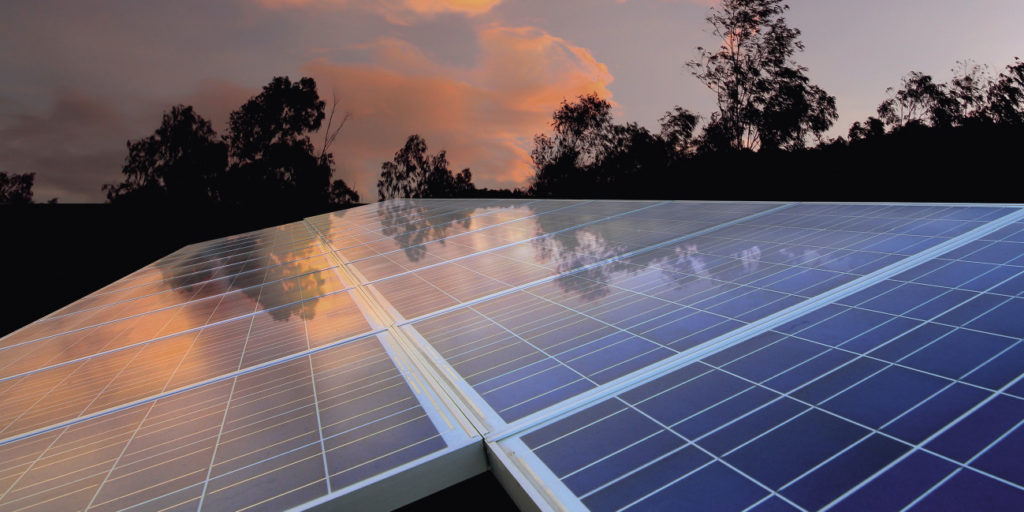Taiwanese market research company, TrendForce has examined the wider implications of China’s new PV policy. “Faced with the oversupply, Chinese module makers will seek ways to export the excessive products, or even sell off the products to overseas markets,” the analysts said on Tuesday. They are also paying attention to global price developments and when EPC companies will start placing orders.
Using Trina Solar to illustrate the price competitiveness of Chinese solar modules in the European market, TrendForce states that if the selloff price for the manufacturer’s product is US$0.25 per watt, then the market price will be $0.39 per watt, including the 56.2% anti-dumping and anti-subsidy tariffs. “This market price would still be lower than other products in the European markets,” it said.
In the U.S., meanwhile, where tariffs are as high as 72.54% for Chinese modules, Trina Solar’s product would cost $0.43 per watt, still making it “marginally competitive”.
Further decreases
Energytrend estimates that more than 70% of global solar module production capacity is in China. “If the Chinese module makers begin the selloff, the global module prices will be lower. The impact of the selloff on global PV industry is expected to last till 2Q19,” Trendforce analysts said.
IHS Markit also expects prices to fall further starting from the third quarter, due to overcapacity and existing oversupply. “This will affect the financial position of the entire PV supply chain,” Karl Melkonyan, Senior Analyst Solar Demand at IHS Markit told pv magazine.
Independent market analyst, Corrine Lin said, “The Chinese multi-cSi supply chain panicked following the notification. Multi wafers especially are facing serious oversupply; after changing from slurry saws to diamond wire slicing, prices fell lower than cash costs. Even polysilicon prices, which were at a long time high, have plummeted; and the same is happening in cells and modules.”
Stronger demand
Overall, Melkonyan expects stronger demand in the fourth quarter compared to the second quarter of 2018, which will gradually halt the price decline. But then, according to his forecast, manufacturers’ margins will have already fallen to a critically low level, which will force some companies to abandon their business, or file for bankruptcy.
“This concerns not only to tier 2 and small manufactures, but can affect … the leading manufacturers too,” Melkonyan said. The majority of the announced capacity expansion plans would be suspended or possibly abandoned altogether. However, the cost and technology leaders are sticking to planned expansions to achieve their goals, such as increasing market share as demand increases or cutting production costs through economies of scale, the analyst added.
“We expect several consolidations to happen in the market and do believe to see the recovery signs in fourth quarter already, which will continue to recover quarter by quarter, since global demand remains on its growing path, in particular in many Asian markets,” Melkonyan continued.
Lin also sees stronger demand. “Demand will bounce back in the beginning of 2019,” she said, “when the low season ends in the second half of this year. In the second half the entire supply chain will stay low in utilization rates, causing cells and module expansion projects to be postponed or stopped. Current production lines should speed up in technical upgrades in order to increase orders by making high-efficiency products during the low season.”
Upsurge
Melkonyan said that there has been an upsurge in the global solar industry over the past decade, caused by (trade) political barriers, inequality of supply and demand, uncertain prices, and extreme competition. These factors will continue to play a role in the coming years.
In the long term, IHS Markit expects consolidation to end with fewer manufacturers and a stabilized situation. The remaining companies will then have much greater capacity, with the best technology and cost leaders prevailing.
This content is protected by copyright and may not be reused. If you want to cooperate with us and would like to reuse some of our content, please contact: editors@pv-magazine.com.









1 comment
By submitting this form you agree to pv magazine using your data for the purposes of publishing your comment.
Your personal data will only be disclosed or otherwise transmitted to third parties for the purposes of spam filtering or if this is necessary for technical maintenance of the website. Any other transfer to third parties will not take place unless this is justified on the basis of applicable data protection regulations or if pv magazine is legally obliged to do so.
You may revoke this consent at any time with effect for the future, in which case your personal data will be deleted immediately. Otherwise, your data will be deleted if pv magazine has processed your request or the purpose of data storage is fulfilled.
Further information on data privacy can be found in our Data Protection Policy.